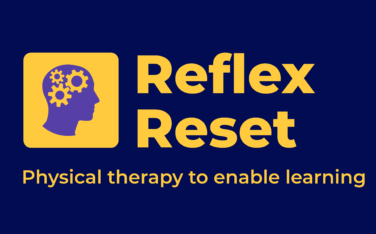Postural Reflexes
Postural reflexes are responsible for maintaining posture when the body moves, and they keep the body upright. It is the effect of gravity on the body which triggers their response and so these reflexes do not begin to develop until after the baby is born. Postural reflexes should be established by the time a child is three and a half and they should remain for life, but with age they may decay, allowing the primitive reflexes to re-appear.
The postural reflexes are divided into two groups – the righting reflexes and the equilibrium reactions.
The primitive reflexes have formed the foundation for conscious movement and the postural reflexes allow subconscious control of posture, balance and coordination in the active and static individual. They help the baby develop into an active being who can roll, sit, crawl, stand, walk and run and their contribution leads to an individual who can respond, at every stage, to a loss of balance and weight change in order to maintain body position.
The postural reflexes will be activated depending on the degree of disturbance to balance. If only the head is misaligned, the righting reflexes will suffice; if the body is threatened to be moved beyond its base, then the equilibrium reactions are needed.
The Labyrinthine Head Righting Reflex (LHRR) – with eyes closed – and the Oculo Head Righting Reflex (OHRR) – with eyes open, are the most important postural reflexes as they are needed for head control. For our eyes to operate usefully, we need stable head control, especially when the body and head move, and also the ability to fix our gaze and follow an object.
What happens if the postural reflexes are underdeveloped?
The purpose of the postural reflexes is to maintain static and dynamic balance, posture and correct alignment of the head and body. Underdeveloped postural reflexes mean that balance and coordination will be poor. This not only has the obvious effect of lack of protection from falling but has wider implications socially and in the classroom.
The effects of poor postural reflex control are not well documented but will include:
- Poor postural control, body alignment and postural tone
- Poor coordination, bilateral integration and motor control of fine movements
- Weak head control and/or associated head movement
- Compromised gaze control
- Reduced visual-motor/hand eye integration and fixation
- Difficulties with reading and writing
- Inadequate sensory integration
- Gravitational insecurity and increased anxiety
- Problems with adaptation, sequencing, multi-processing, information overload
- Retained or partially integrated primitive reflexes
Righting reflexes and equilibrium reactions are more complicated than the primitive reflexes. When a child has underdeveloped postural reflexes, a stressful situation may set off a ‘lower’ level of response – this may result in a primitive reflex being triggered to respond to the stress. Such a response is inappropriate – it is inefficient, inaccurate and ‘not fit for purpose’ but the immature nervous system has no other way to react.
